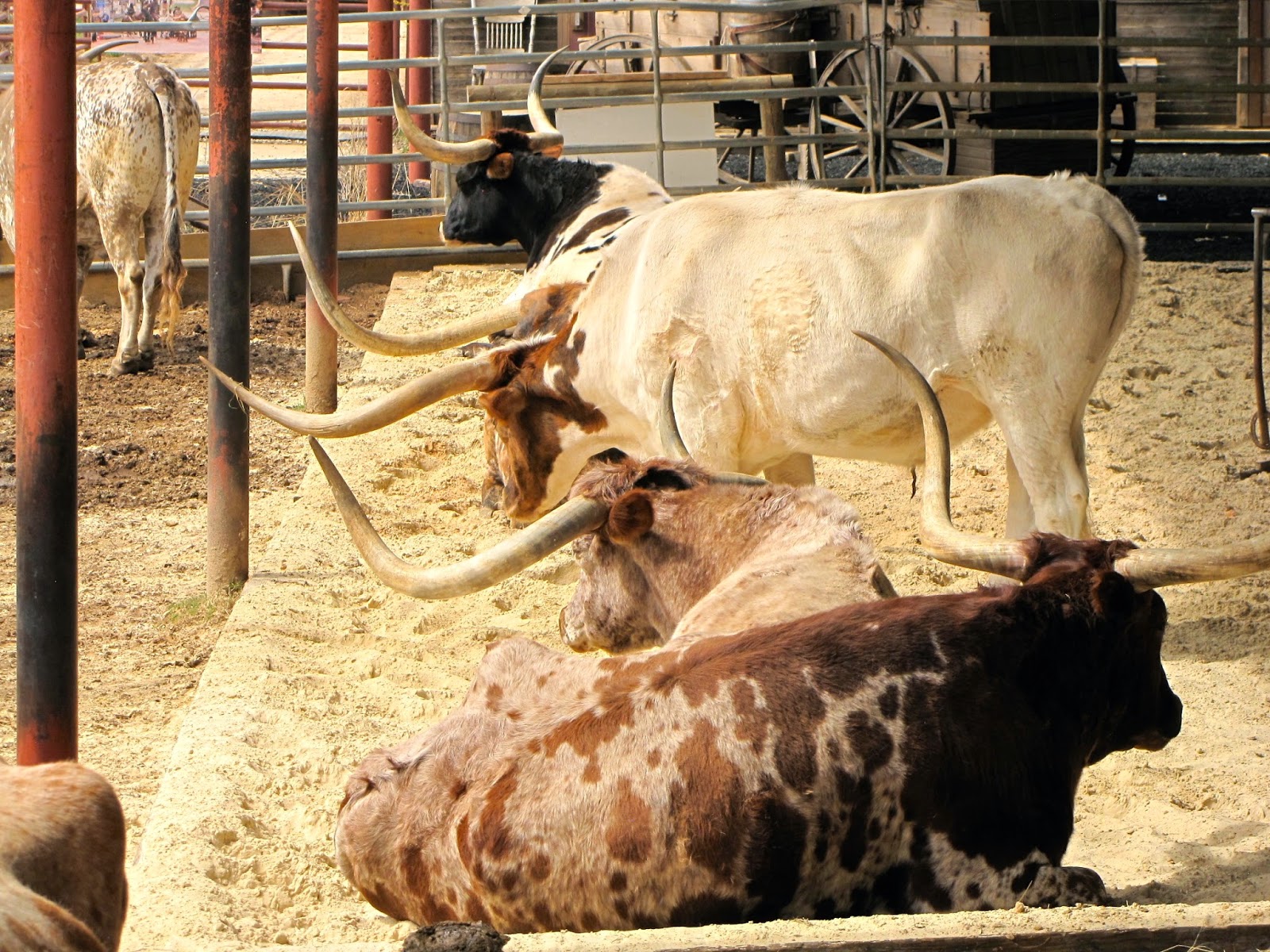Soft colors of early morning.
Sunrise
Turkey vultures
Fort Worth Stock Exchange Building was constructed in 1902-03. It was headquarters for one of the greatest cattle markets in the world.
In the Stockyard Museum
Stock Show Queen.
Fort Worth baseball team
The Bad Luck Wedding Dress carries with it a legend of illness and misfortune for the wearer.
Marie V. N. Greene and David P. VanHorne were married Jan. 14, 1886.
The Army ration cans were used to make this Jingle dress around 1900.
The old shell necklace is inlaid with turquoise and coral.
White buffalo skin has aged over the decades.
Interesting necklace with coins.
Meilicke Payroll Calculator. Patented 1915.
When they came to town cowboys looked forward to having a bath. For 15 cents they could have fresh water.
Turn style to where????
Behind the Stock Exchange building.
Licking some salt.
 |
| Remnant of the stock pens. |
This old farm gal loves her animals.
Don't you always hear. Things are big in Texas.
Next stop the Bureau of Engraving and Printing. It was so interesting. First watched a video about the process and history. The Museum had an excellent way of telling the history, how money is printed and personal work days told by the workers. The most interesting was the engraver. No cameras or phones were allowed in the building. These photos taken of the Internet.

A factory worker at the Bureau of Engraving and Printing shows off a finished page after offset printing. The first stage of the process, this is where the subtle colors and shades are added to the background of the bill.
 |
| Completed one dollar bills are scanned by the electronic eye, which checks 8,000 sheets of money per hour for any inconsistincies or flaws. Only "perfect" money is released to the banks. |
Stacks of uncut money fill a room at the Bureau of Engraving and Printing in Fort Worth, Texas. Each stack contains 10,000 sheets of printed currency, meaning if these are hundreds, each stack represents $32 milllion.
Cut currency is stacked into "bricks" of 4,000 bills per packet. The finished product is delivered to the Federal Reserve where it becomes money.
Fun Facts About Money
- The Bureau of Engraving and Printing produces 26 million notes a day, with a face value of approximately $907 million.
- Currency is actually fabric composed of 25 percent linen and 75 percent cotton. Currency paper has tiny red and blue synthetic fibers of various lengths evenly distributed through out the paper.
- The dollar was officially adopted as our nation’s unit of currency in 1785.
- The largest bill ever printed by the Bureau of Engraving and Printing was the $100,000 gold certificate.
- The U.S. Secret Service was created during the Civil War to fight counterfeiting.
- The motto “In God We Trust” did not appear on paper currency until 1963.
- The Bureau of Engraving and Printing has two facilities, one in Washington, D.C. and the other in Fort Worth, Texas. Together they use approximately 9.7 tons of ink per day.
- The largest note produced today is the $100 bill.
- It costs approximately 6.4 cents per note to produce U.S. currency.
- About 45 percent of the notes printed each year are $1, and 95 percent are used as replacement notes.
- About 4,000 double folds (forward and backward) are required before a note will tear.
- The average life of a Federal Reserve note depends upon its denomination:
$1 bill - 21 months
$5 bill - 16 months
$10 bill - 18 months
$20 bill - 2 years
$50 bill - 4.5 years
$100 bill - 7.5 years
"The average production equals $386 million a day," tour guide Kim Hein said before jokingly adding: "Those folks down there can say they make $16 million an hour."
To thwart those who might seriously contemplate making money of their own, sophisticated machinery is used in the four-month process of making a bill. (There also are several drying periods along the way.)
"You start off with the offset," said Charlene Williams, the facility's director. "That's where your color is incorporated into the note. Then the intaglio printing is like the fine line, very deep engraving. If you run your finger across the engraving, you'll feel the raised image on the note."
Later, serial numbers and official seals are added by letterpresses.
"Bricks" of 400 new notes -- with values ranging from $4,000 for a wad of one-dollar bills to $400,000 for hundreds -- are stacked on pallets before being moved to the factory's large vault.
A single pallet of hundreds, Hein said, is valued at $64 million. (Visitors often sigh wistfully at that amount.)
Location:Fort Worth, TX











































No comments:
Post a Comment